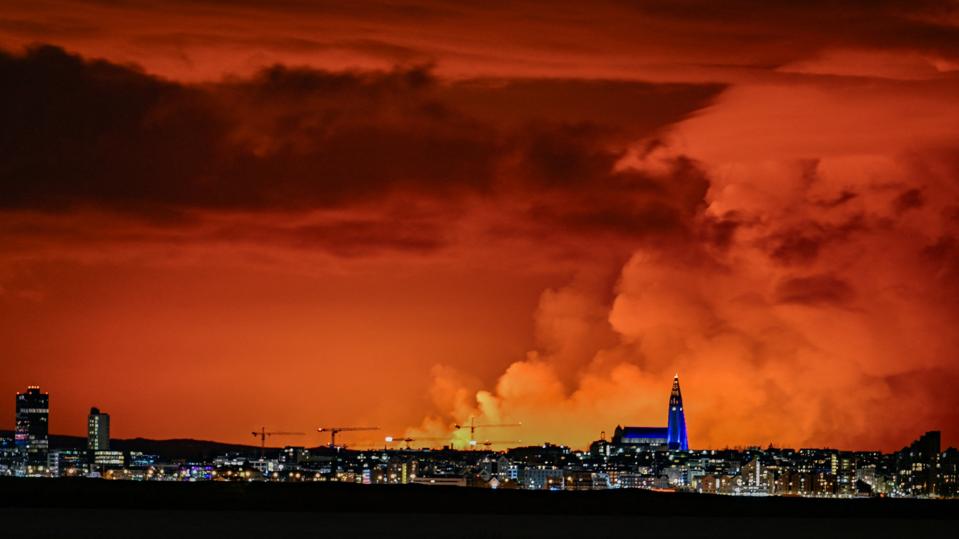Topline
Icelandic officials cautioned locals to stay indoors on Thursday amid possible health risks posed by gas pollution, a result of the country’s latest volcanic eruption, which prompted nearby evacuations and forced a world-renowned geothermal spa to close amid fears of sinkholes, earthquakes and lava flow.
Key Facts
Iceland’s Department of Civil Protection and Emergency Management said sulfur dioxide gas released by a volcanic eruption on the Reykjanes peninsula “can be dangerous in large quantities,” cautioning locals in the region to stay indoors “as much as possible.”
The Icelandic Meteorological Office said Wednesday the “danger is considered very high” in the area closest to the eruption, while the region surrounding the town of Grindavik is “high” because of higher risks of sinkholes, fault movements and lava flow.
The risk of gas pollution is “very high,” according to the agency, which noted a decrease in pollution risks for areas farther away from the eruption.
The Blue Lagoon geothermal spa—located in Grindavik—announced Thursday it will temporarily close until Friday, when it will reassess the situation, adding they already evacuated the facility.
A power plant in Svartsengi was evacuated earlier this week because of health concerns posed by gas pollution, Iceland’s public broadcaster RUV reported.
Big Number
5 miles. That’s the height of the gas column emitted by the volcano when it erupted last week, according to the European Union’s Copernicus Climate Change Service. The plume of sulfur dioxide will continue to move over northern Europe and into Russia through the weekend and has already reached Ireland and the U.K., an agency official told CBS.
Tangent
Sulfur dioxide—a gas emitted during volcanic eruptions—is a toxic gas that can cause severe irritation to the respiratory system, the eyes and skin, according to the Centers for Disease Control and Prevention. Higher exposure could result in pulmonary edema, a condition caused by excess liquid in the lungs. Children are typically more vulnerable to the toxic gas because the diameter of their airways is smaller, the agency said. Iceland’s meteorological office warned the gas could affect those with asthma, adding “it can be lethal at high enough concentrations for a long time.”
Key Background
On Saturday, a volcano outside Grindavik—located about 32 miles from Reykjavik—erupted after a series of seismic activity, RUV reported. Iceland experiences a large number of earthquakes and volcanic eruptions each year because of its position on a tectonic plate boundary, according to Perlan, a Reykjavik-based museum. In December, another volcano in the region erupted after weeks of thousands of earthquakes, prompting a nearby fishing town to evacuate and the Blue Lagoon to close.
Further Reading
Iceland Volcano Erupts After Weeks Of Earthquakes (Forbes)
Iceland’s Earthquake Swarm: What We Know About The Thousands Of Tectonic Quakes (Forbes)

